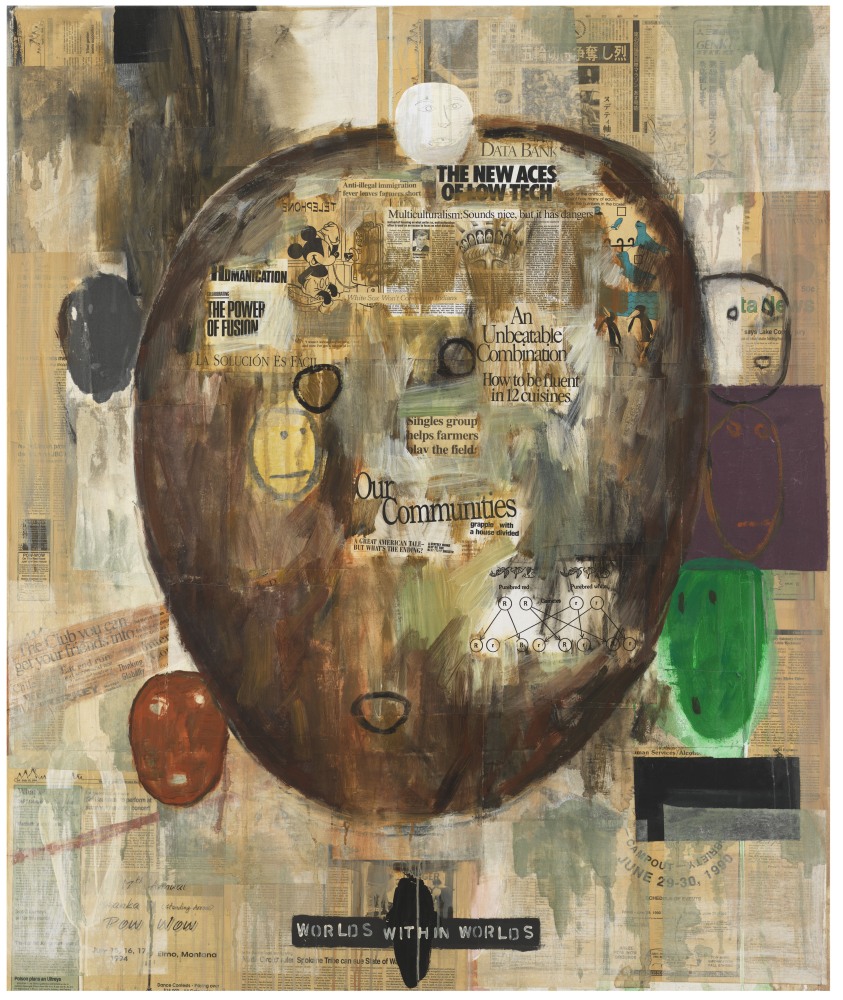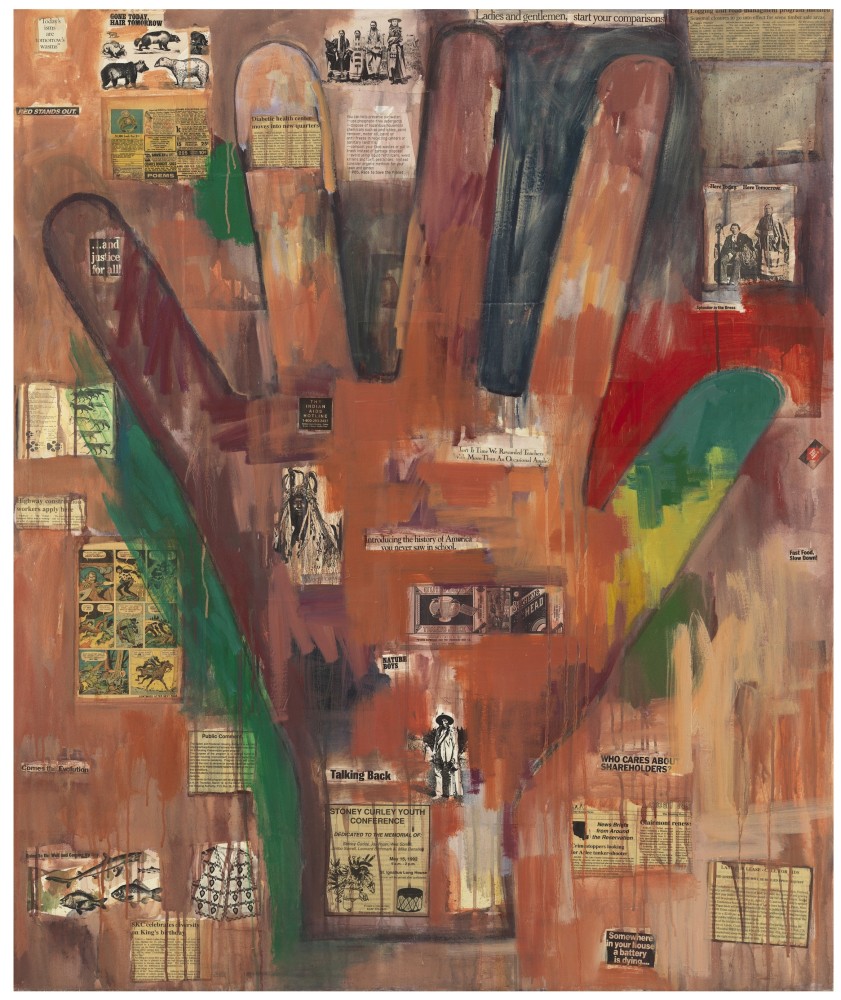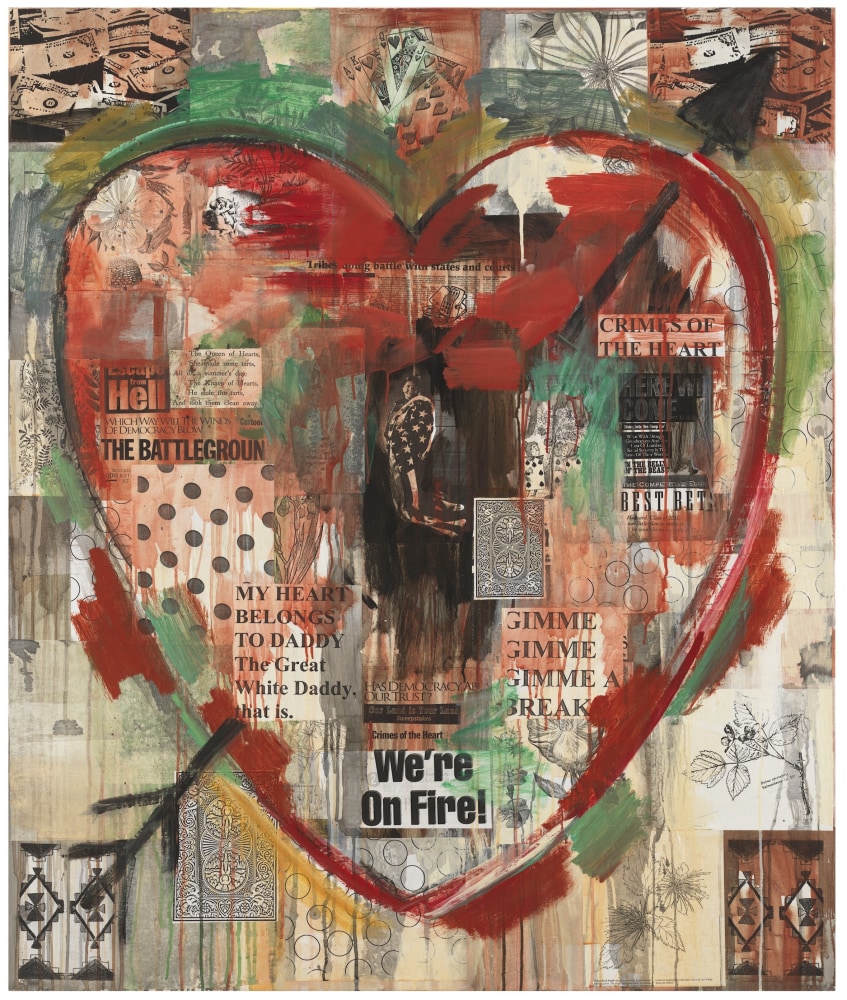
Jaune Quick-to-See Smith, I See Red: Worlds within Worlds, 1996. Mixed media on canvas.
Courtesy the artist and Garth Greenan Gallery, New York.
Working in painting, drawing, collage, and printmaking, artist and activist Jaune Quick-to-See Smith, an enrolled Salish member of the Confederated Salish and Kootenai Nation, draws on both indigenous and modernist artistic traditions to explore contemporary Native American identity, histories of colonialism and oppression, and the environment. Born in 1940 on the St. Ignatius Indian Mission in Montana, Smith began exhibiting regularly in the late 1970s. Alongside her own artistic practice, the artist has also been active as a curator and educator, organizing dozens of exhibitions devoted to the work of contemporary Native American artists and giving lectures and workshops internationally. Describing herself as a “cultural arts worker,” Smith situates her work as an artist as inextricable from her work as an activist and advocate for Native American culture.

Jaune Quick-to-See Smith, I See Red: Indian Hand (Botero), 1993.
Mixed media on canvas. Courtesy the artist and Garth Greenan Gallery, New York.
For Independent New York, Garth Greenan Gallery will be presenting four works from Smith’s series I See Red, made between 1993 and 1996—a period that coincided with celebrations of the quincentennial of Christopher Columbus’s arrival in the Americas. The paintings in the series each feature strong central motifs, recalling glyphs, against a background of gestural, abstract patches of color, interspersed with collaged imagery and text drawn from a range of mass media sources. In I See Red: Indian Hand (Botero) (1993), the outline of a hand is surrounded by an array of collaged fragments: photographs of Native Americans in traditional dress, a page from a cowboy comic book, and clippings of articles and advertisements from the local reservation newspaper. I See Red: McFlag (1996) comments on the relationship between American nationalism, consumerism, Native American oppression, and environmental destruction, depicting the American flag with press clippings from international publications embedded into the red stripes, with the word “BIG” recurring throughout alongside references to Disney and Mickey Mouse. “We chose to feature Jaune’s I See Red series because it was such an innovative period for her,” says founder Garth Greenan. “The works are visually striking and combine her cutting humor with her clear interest in both the history of art and America’s racial and socioeconomic issues. Though red paint is a signature of her work as a whole, it is most densely symbolic in this series.”
Together... [the works] demonstrate her poignant ability to highlight the paradoxes and contradictions at the heart of American politics and history.
–Garth Greenan, on the evolution of Jaune Quick-to-See Smith

Jaune Quick-to-See Smith, I See Red: My Heart Belongs to Daddy, 1996.
Mixed media on canvas. Courtesy the artist and Garth Greenan Gallery, New York.
Greenan first encountered the artist’s work when he was in college, and the gallery began representing her about a year ago, after they were introduced by a mutual friend. In April, she will have her first solo exhibition with the gallery, “Jaune Quick-to-See Smith: Making Medicine,” which will feature recent mixed-media paintings, watercolors, and drawings. The works featured at Independent and in her forthcoming exhibition are “separated by almost two decades but they complement each other nicely,” says Greenan. “Together, they’re an opportunity to show Jaune’s formal evolution at the same time that they demonstrate her poignant ability to highlight the paradoxes and contradictions at the heart of American politics and history.”